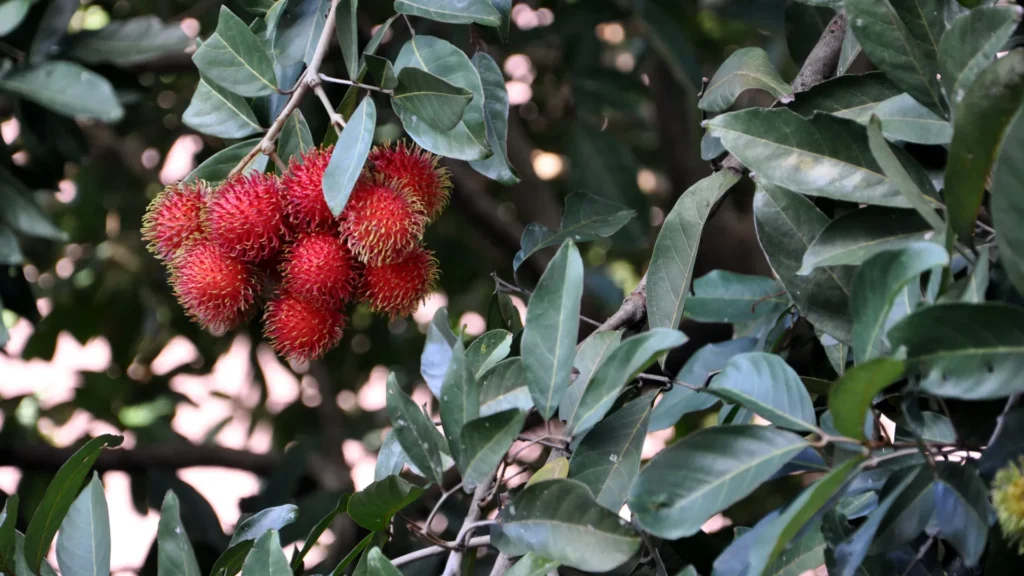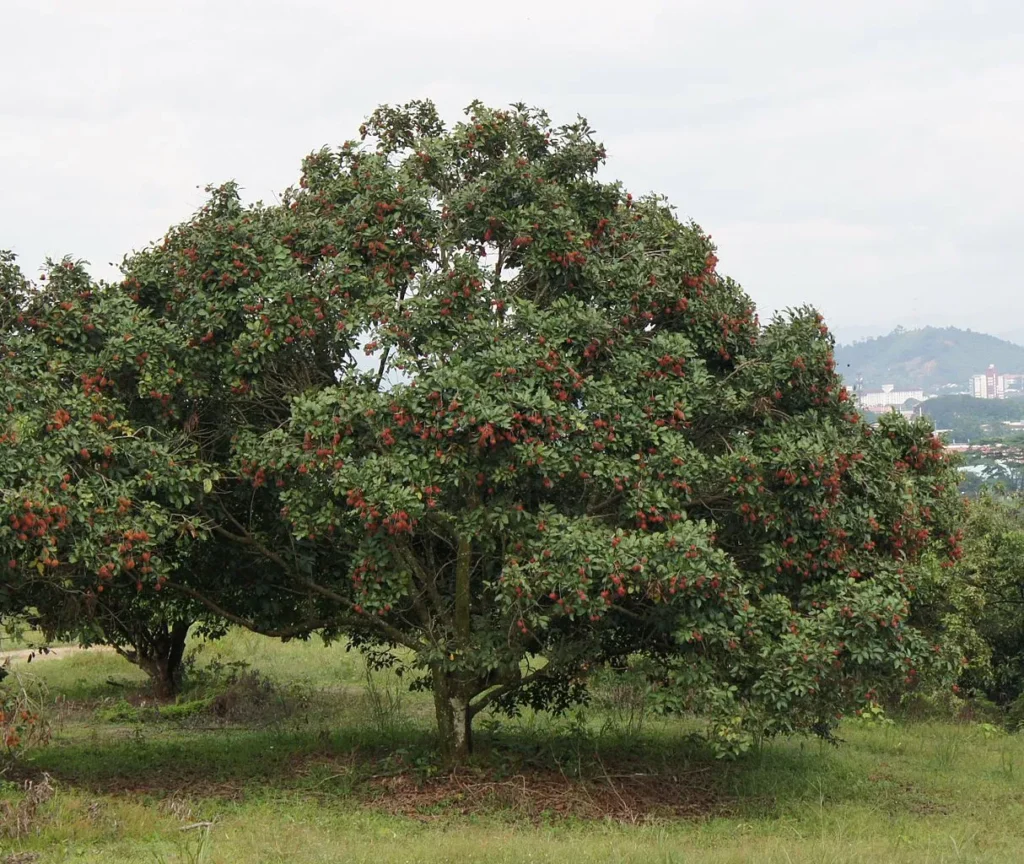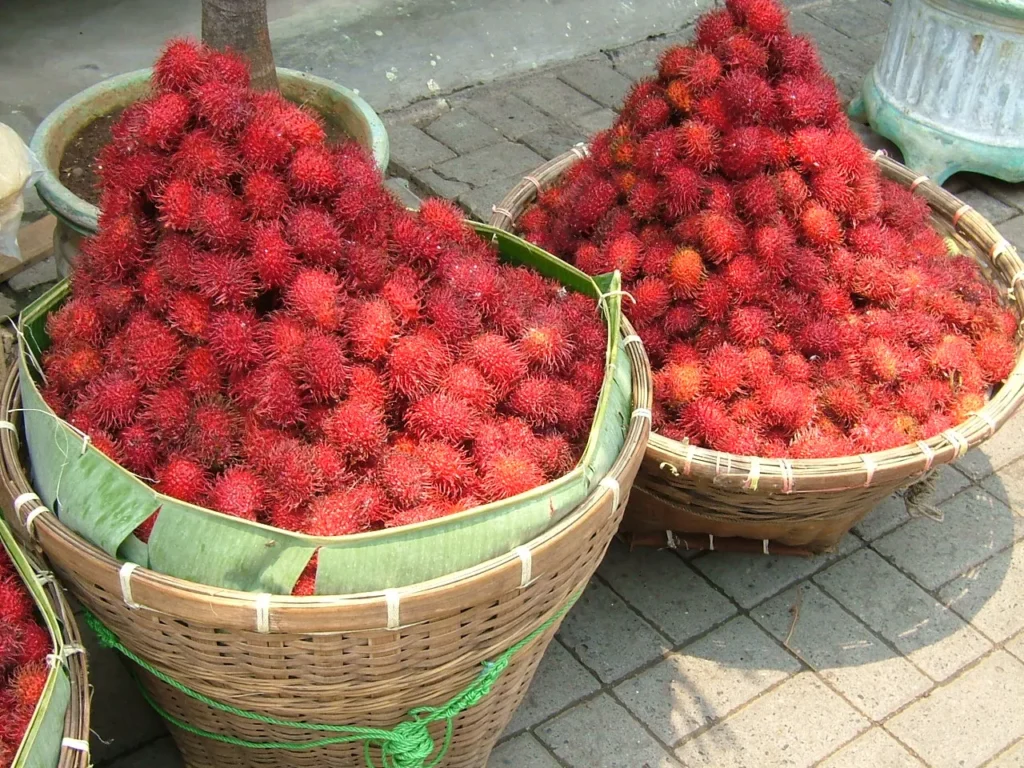Southeast Asia is a place where vibrant flavors of many exotic fruits transport you to a world of sensory bliss. One such exotic fruit is Rambutan (Nephelium lappaceum) belonging to the soapberry (sapindaceae) family. With its striking resemblance to the Lychee fruit, this luscious fruit is loved by fruit enthusiasts worldwide. It is native to Malaysia and Indonesia. In India, the fruit tree is grown in tropical regions of Kerela, Tamil Nadu, and the Konkan.
Rambutan is a round, red fruit filled with juicy goodness. It is an aromatic delight that exudes a charming scent and offers a sweet, fruity flavor with a subtle twist of strawberries and grapes. It is covered with long, soft hairy spines which gave rise to its name Rambutan from the Malay word “rambut” meaning hair.
Diving into the Rambutan’s world, we explore its main varieties. The popularly grown ones are Binjai, Lebak Bulus, Sinyonya, Sikonto Chooi Ang, Azimat, Rapiah and Cimacan. From the succulent Binjai to the delightful Cimacan, each variety offers a slight variance in taste.

How does one grow this plant? The Rambutan, evergreen in nature, stands tall at a height of 12-20 centimeters. To ensure healthy growth, planters maintain a planting distance of 6×6 meters, accommodating approximately 417 plants per hectare. Patience is key when cultivating this tropical treasure. Rambutan trees propagated through seedling take around 6-7 years to bear fruit, while grafted trees start delighting growers with their harvest within 3 to 4 years.
Ah, the harvest! When the tree reaches its peak fruiting period, nature’s generosity shines through. With an average yield of 100-150 kilograms (that’s 500-1500 fruits) per plant, one can only imagine the bountiful display of abundance that graces the land. It’s a testament to the fruitful partnership between the nurturing soil and the thriving Rambutan tree.
Speaking of soil, the Rambutan grows best in deep, clay loam or rich sandy loam having plenty of organic matter. A well-drained environment sets the stage for proper growth. The soft soil allows the roots to delve into the earth’s depths at 2-3 meters below the surface.

The Rambutan embraces the warmth of tropical and sub-tropical regions, where temperatures range between 25 and 30 degrees Celsius. To truly unlock the essence of this fruit, an ideal elevation of about 1500-2000 meters above sea level adds a touch of magic.
Water, the elixir of life, plays a crucial role in the Rambutan’s journey. As the plant grows, it craves ample hydration. Drip irrigation becomes the perfect companion during critical growth phases. It ensures Rambutan receives the water it needs. It flourishes really well under the nurturing touch of responsible cultivation.
Now, let’s address the pests and diseases that challenge this tropical tree. Fear not, for the Rambutan is a resilient fruit, rarely bothered by unwelcome visitors. Occasional encounters with pests like the Fruit Borer and Acrosircops crammella can be kept under control through well-established chemical methods. The occurrence of powdery mildew, which may cause premature fruit dropping, can be curtailed with timely application of a sulphur spray during the early stages of plant growth.

From its charming appearance to its irresistible aroma and delightful taste, this tropical fruit has it all. Whether you’re captivated by its sweet, fruity notes or enticed by the blend of strawberries and grapes, the Rambutan promises an excellent business opportunity to cultivators looking for unique plants such as this.
So, why wait? Connect with us at Himalayan Florica via email himalayanflorica.slg@gmail.com to order saplings and grafted plants for starting Rambutan’s cultivation. Let this exotic treasure unlock your curiosity and eagerness in making it a local fruit in the Northeast of India.

